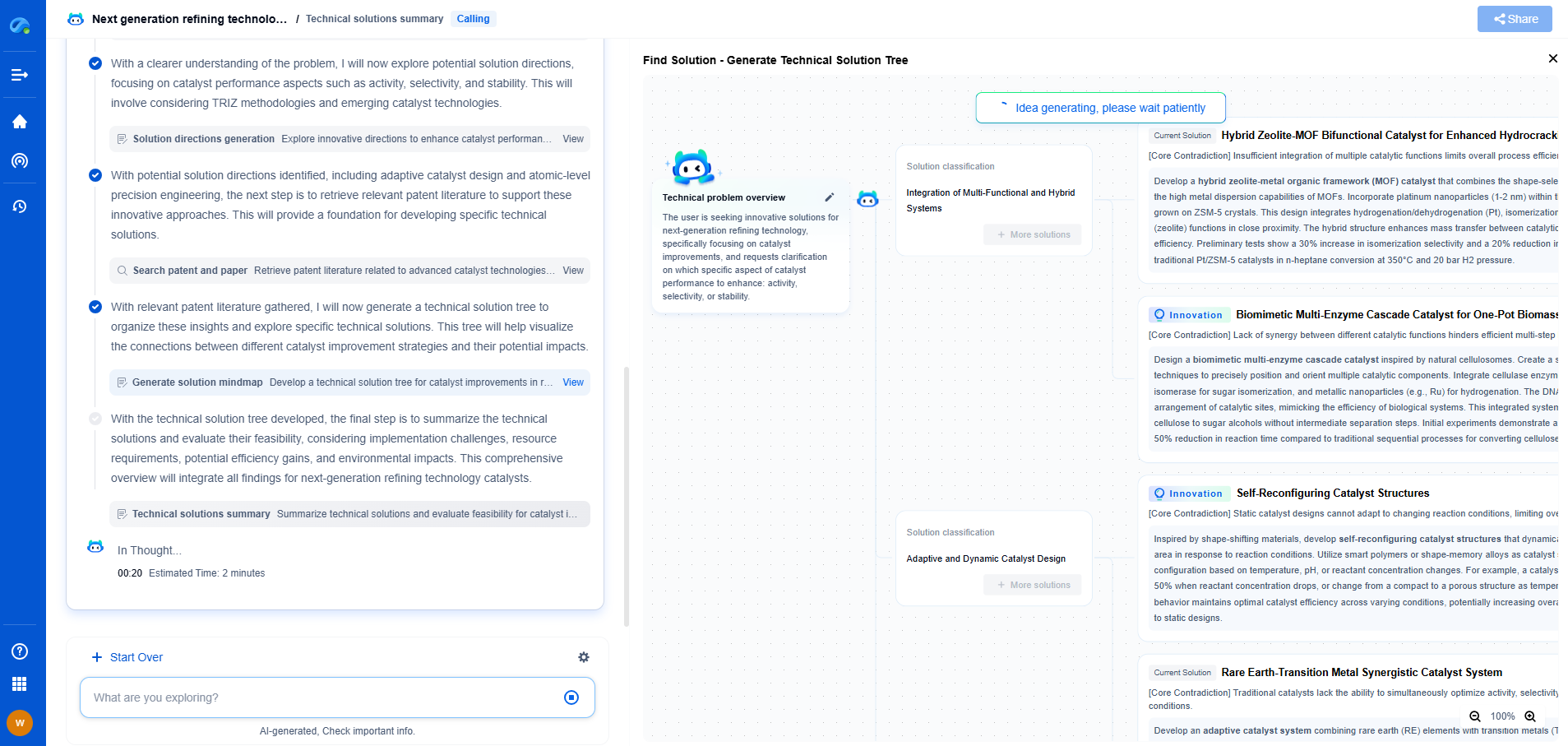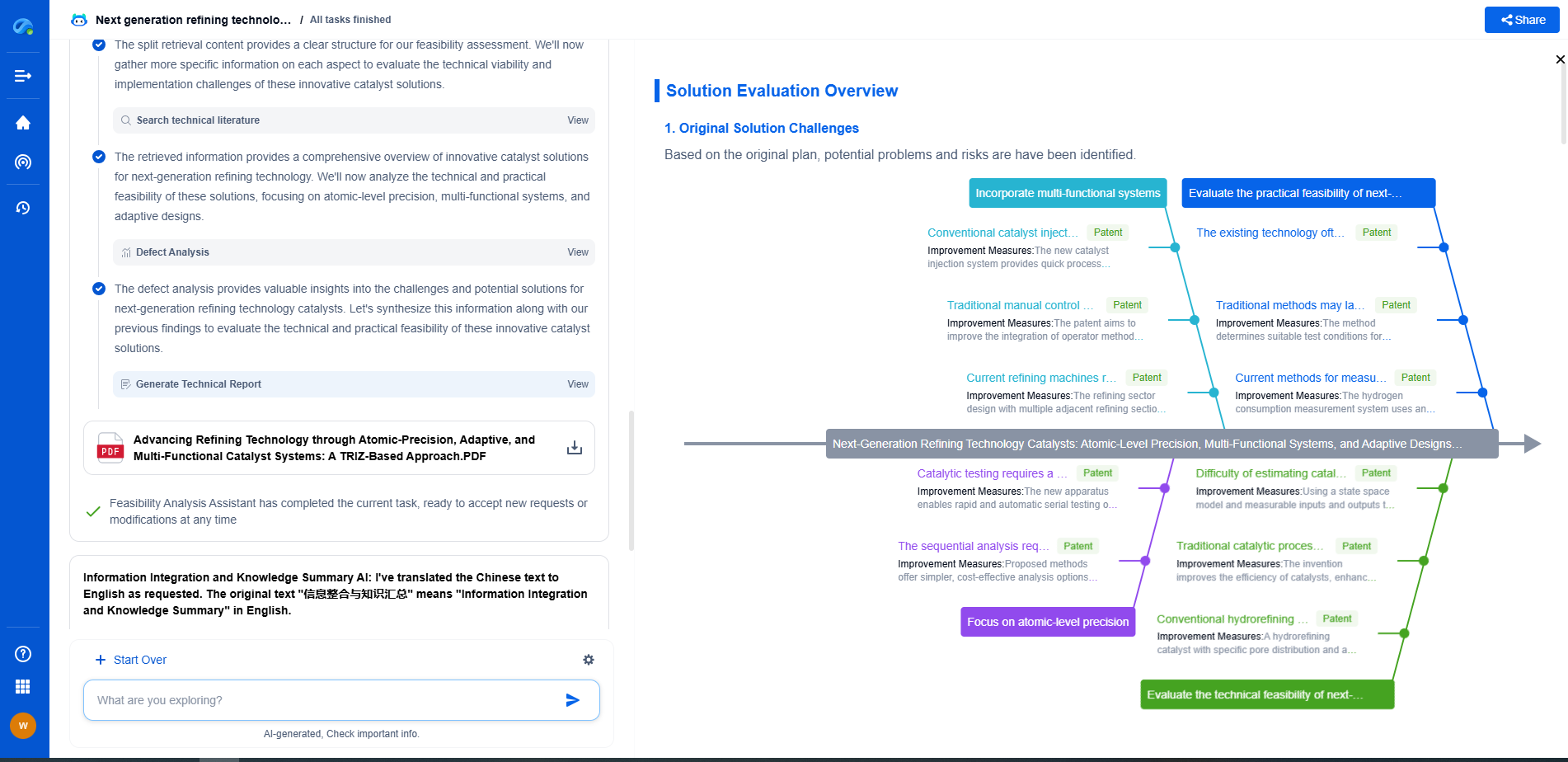What is cycle time in robotic operations?
JUN 26, 2025 |
In the fast-paced world of manufacturing and automation, efficiency is key. Among the various metrics used to measure productivity, cycle time stands out as a crucial indicator. But what exactly is cycle time in the context of robotic operations, and why is it so important? This blog aims to demystify the concept of cycle time and explore its significance in robotic processes.
Defining Cycle Time
Cycle time in robotic operations refers to the total time taken by a robot to complete one full cycle of its programmed task. This includes all activities from the start to the finish of a process, such as picking up an object, moving it to a designated location, and then returning to its original position to begin the next cycle. Cycle time is commonly measured in seconds or minutes, depending on the complexity and nature of the task.
Factors Influencing Cycle Time
Several factors can influence cycle time in robotic operations. One primary factor is the complexity of the task. More intricate tasks require more time to execute, thereby increasing the cycle time. Additionally, the type of robot used, its speed, and the precision required for the task all play a significant role in determining the cycle time.
Another critical factor is the efficiency of the programming and the design of the robotic system. Streamlined programming that minimizes unnecessary movements and optimizes the robot's path can significantly reduce cycle time. Furthermore, the layout of the workspace and the integration of the robotic system with other machinery can either enhance or impede the cycle time.
The Importance of Optimizing Cycle Time
Optimizing cycle time is vital for enhancing productivity and maximizing output in robotic operations. A shorter cycle time means that more tasks can be completed in a given period, leading to higher efficiency and throughput. This is especially important in high-demand industries where speed and precision are crucial to meet production goals.
Moreover, reducing cycle time can lead to cost savings. With a faster cycle time, energy consumption per task is decreased, and wear and tear on the robotic equipment is minimized, potentially extending the lifespan of the machinery. Additionally, in competitive markets, reducing cycle time can provide a significant edge by enabling faster delivery of products to customers.
Techniques to Reduce Cycle Time
There are several strategies that can be employed to reduce cycle time in robotic operations. One effective approach is to utilize advanced simulation tools during the design phase. By simulating robotic processes, manufacturers can identify potential bottlenecks and optimize the workflow before actual deployment.
Another technique is the use of machine learning algorithms to continually analyze and refine the robot's movement patterns, thereby enhancing efficiency over time. Regular maintenance and updates to the robotic system also ensure that performance remains at its peak, preventing unexpected delays and downtime.
Conclusion
Cycle time is a vital metric in robotic operations that directly impacts productivity, efficiency, and cost-effectiveness. By understanding and optimizing cycle time, businesses can significantly enhance their manufacturing processes and gain a competitive advantage in the market. As technology continues to evolve, the importance of cycle time optimization in robotic operations is likely to grow, underscoring its relevance in the quest for operational excellence.
Ready to Redefine Your Robotics R&D Workflow?
Whether you're designing next-generation robotic arms, optimizing manipulator kinematics, or mining patent data for innovation insights, Patsnap Eureka, our cutting-edge AI assistant, is built for R&D and IP professionals in high-tech industries, is built to accelerate every step of your journey.
No more getting buried in thousands of documents or wasting time on repetitive technical analysis. Our AI Agent helps R&D and IP teams in high-tech enterprises save hundreds of hours, reduce risk of oversight, and move from concept to prototype faster than ever before.
👉 Experience how AI can revolutionize your robotics innovation cycle. Explore Patsnap Eureka today and see the difference.
- R&D
- Intellectual Property
- Life Sciences
- Materials
- Tech Scout
- Unparalleled Data Quality
- Higher Quality Content
- 60% Fewer Hallucinations
Browse by: Latest US Patents, China's latest patents, Technical Efficacy Thesaurus, Application Domain, Technology Topic, Popular Technical Reports.
© 2025 PatSnap. All rights reserved.Legal|Privacy policy|Modern Slavery Act Transparency Statement|Sitemap|About US| Contact US: help@patsnap.com

